Reptiles are often overlooked in conservation efforts, yet they play a vital role in our ecosystems. The article “16 Rare Reptiles Rescued from Extinction” highlights the incredible success stories of some of the world’s most unique and endangered reptiles. From the giant tortoises of the Galápagos to the minute leaf chameleons of Madagascar, these species were once teetering on the brink of extinction. Thanks to dedicated conservation efforts, these rare reptiles have been given a second chance. This list celebrates the remarkable recovery journeys of these extraordinary creatures and underscores the importance of ongoing conservation work to protect them for future generations.
Galápagos Giant Tortoise (Chelonoidis nigra)
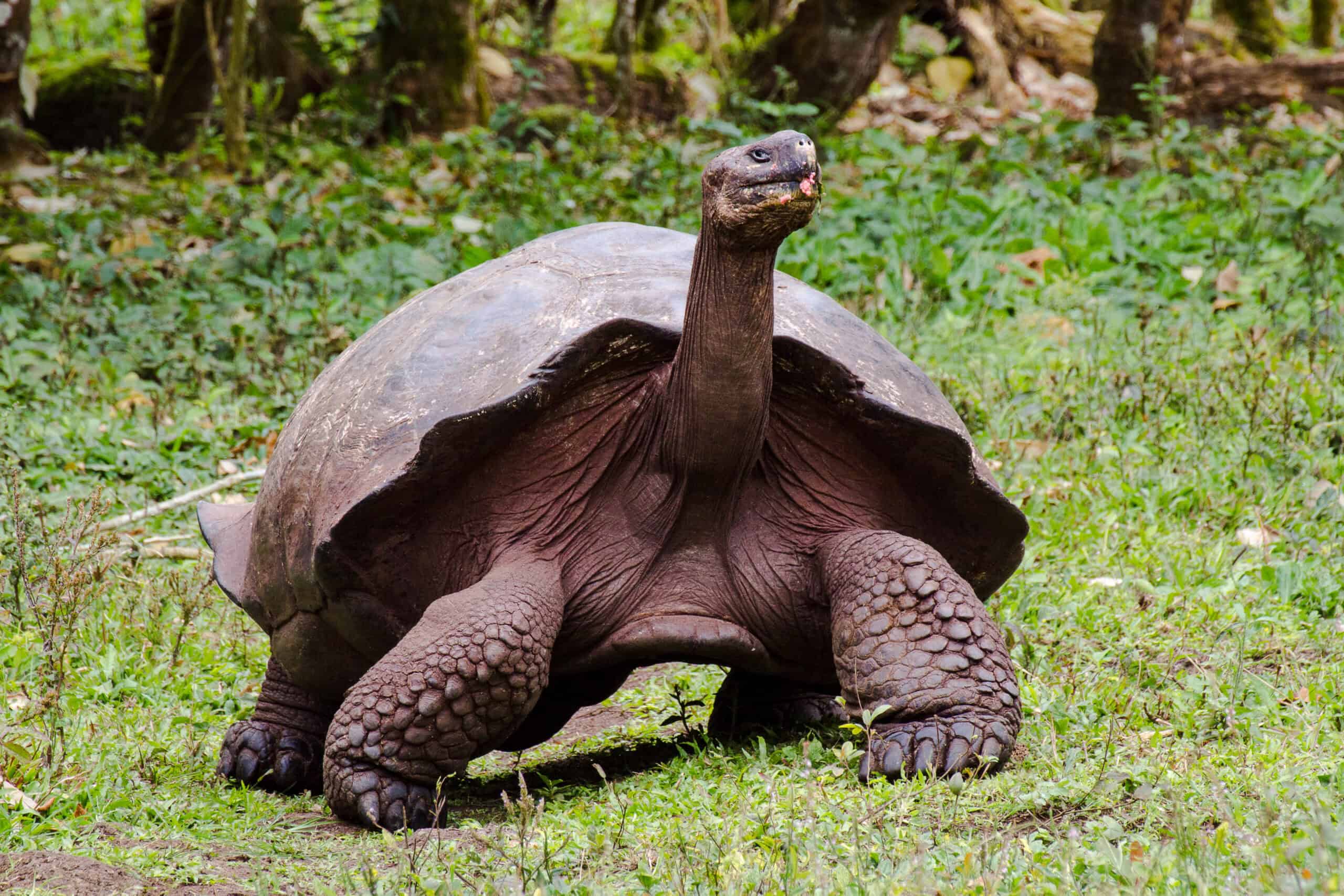
The Galápagos Giant Tortoise, a marvel of evolutionary biology, faced near extinction due to extensive hunting by whalers and pirates during the 19th century. Native to the Galápagos Islands, these tortoises are known for their impressive longevity, with some living over 100 years, and their considerable size, weighing up to 550 pounds. Their populations were decimated as they were collected for food and oil, leaving only a handful of individuals on some islands by the 1970s. Intensive conservation efforts have since been launched, including captive breeding programs and rigorous habitat restoration projects. These efforts have led to a significant rebound in their numbers. Today, although still classified as vulnerable, the Galápagos Giant Tortoise is a beacon of successful conservation, symbolizing hope for other endangered species. Ongoing efforts continue to ensure their habitats are protected and their populations remain stable.
Kemp’s Ridley Sea Turtle (Lepidochelys kempii)
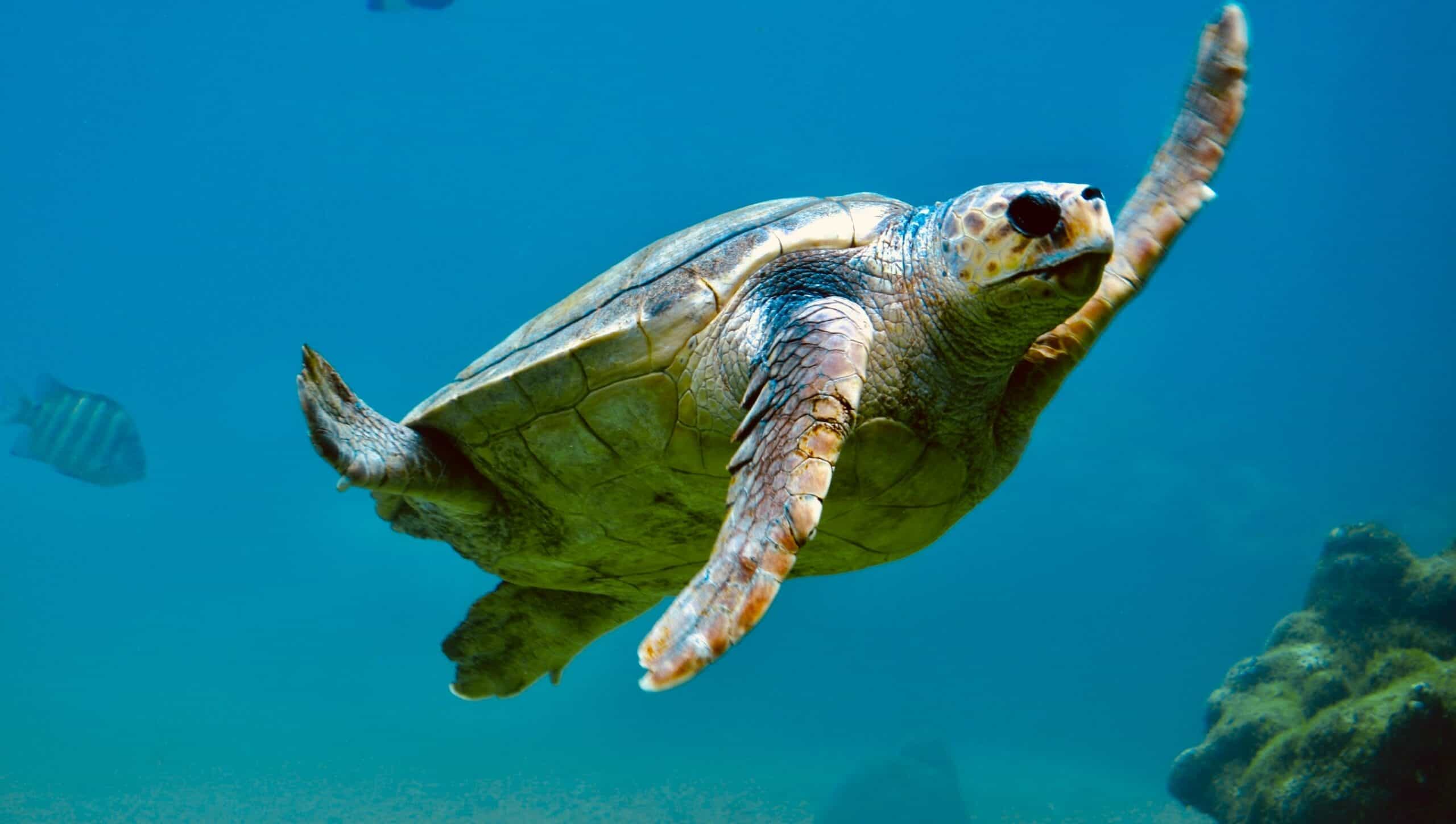
The Kemp’s Ridley Sea Turtle, the smallest and most critically endangered sea turtle species, is primarily found in the Gulf of Mexico. This species was driven to the brink of extinction by egg harvesting and incidental capture in fishing gear. Conservation initiatives, including international cooperation between Mexico and the United States, have been crucial in protecting nesting sites and implementing head-start programs for hatchlings. These efforts have resulted in a slow but steady increase in their population. Despite these measures, Kemp’s Ridley Sea Turtles continue to face significant threats from climate change, habitat destruction, and pollution. Their plight underscores the need for ongoing and enhanced conservation strategies to ensure their survival. The turtles’ recovery efforts include protecting nesting beaches, reducing bycatch through modified fishing practices, and rehabilitating stranded turtles, making it a comprehensive approach to conservation.
Madagascar Big-headed Turtle (Erymnochelys madagascariensis)
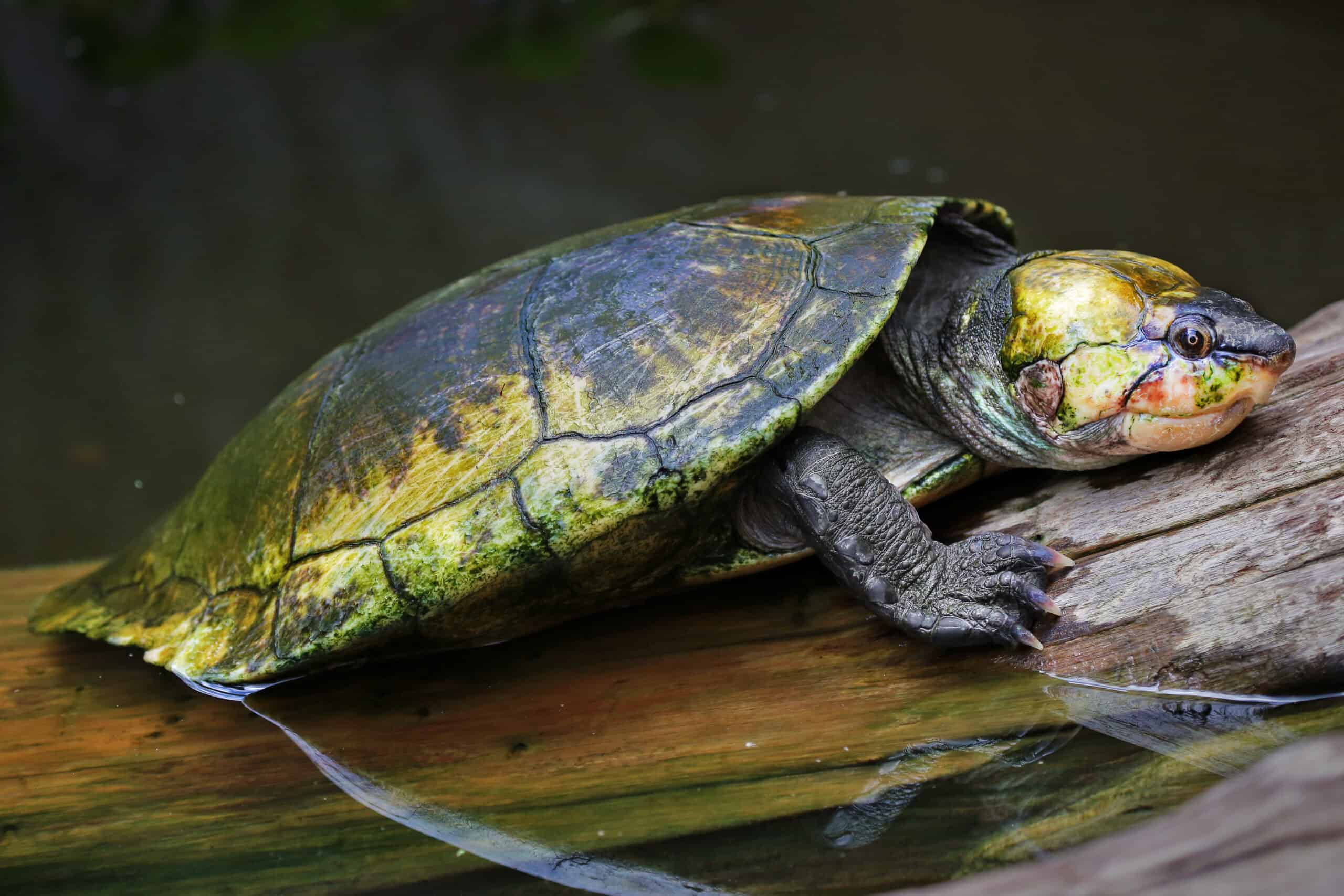
The Madagascar Big-headed Turtle, distinguished by its large head and unique golden plates, is native to the freshwater ecosystems of Madagascar. This species has been severely impacted by habitat destruction, hunting, and the illegal pet trade. Conservation efforts have included captive breeding programs, legal protection, and habitat restoration initiatives aimed at preventing their extinction. These efforts have shown positive results, with signs of population stabilization in certain protected areas. However, the species remains critically endangered, and continued vigilance and support for conservation programs are essential. The Madagascar Big-headed Turtle serves as a vital indicator of the health of its freshwater habitat, making its conservation critical not only for the species itself but also for the broader ecosystem it inhabits.
Fiji Banded Iguana (Brachylophus fasciatus)
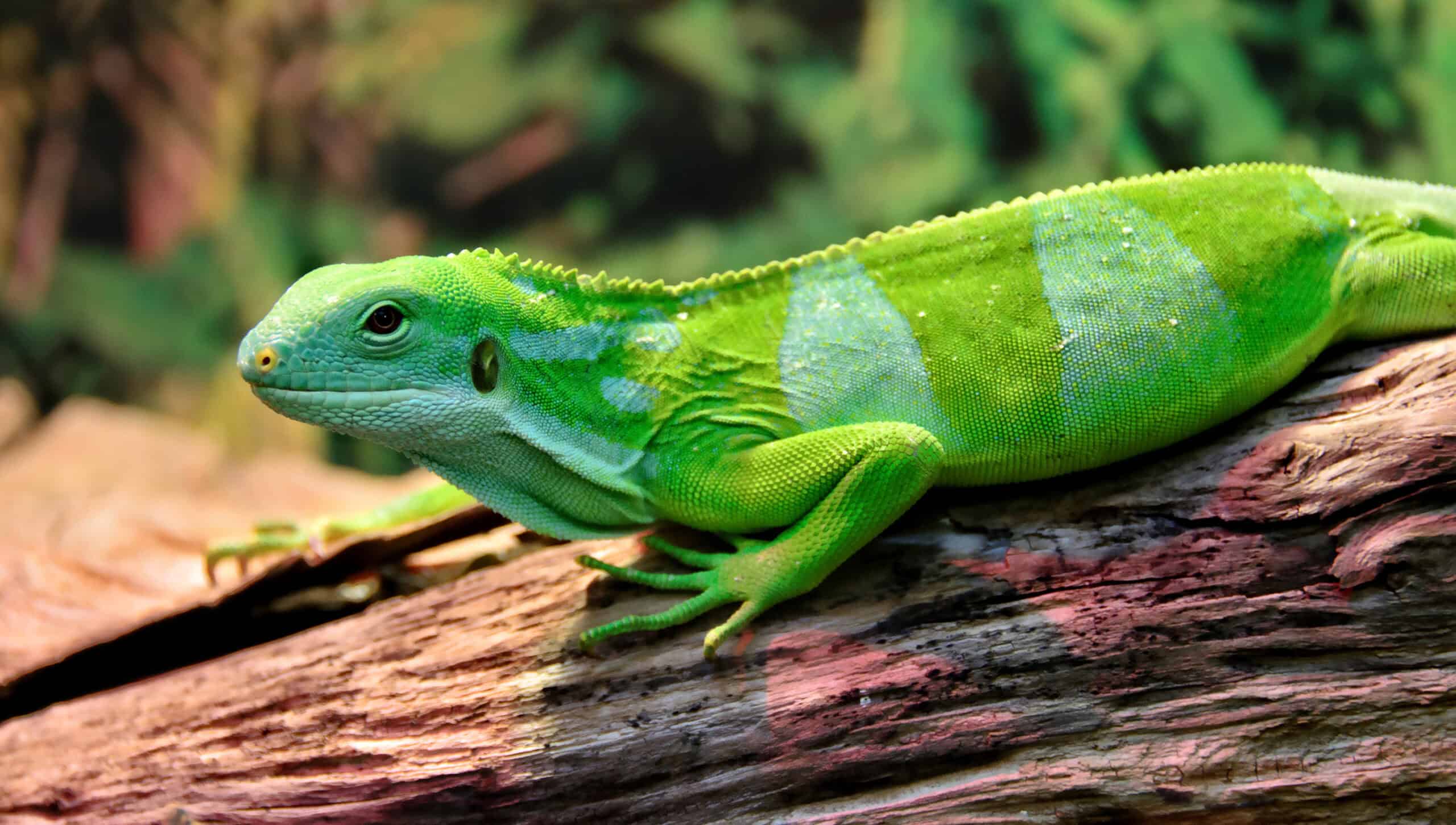
The Fiji Banded Iguana, known for its striking green and blue bands, is endemic to the islands of Fiji. This visually stunning reptile has faced drastic population declines due to habitat loss, predation by invasive species, and illegal collection for the pet trade. Conservation efforts have focused on habitat protection, captive breeding, and community engagement to reduce human impact. These initiatives have led to some recovery in population numbers, though the species remains vulnerable. The survival of the Fiji Banded Iguana is closely tied to the preservation of its forest habitat, emphasizing the interconnectedness of species and their environments. Continued efforts are needed to monitor populations, control invasive species, and raise awareness about the importance of this unique iguana.
Grand Cayman Blue Iguana (Cyclura lewisi)
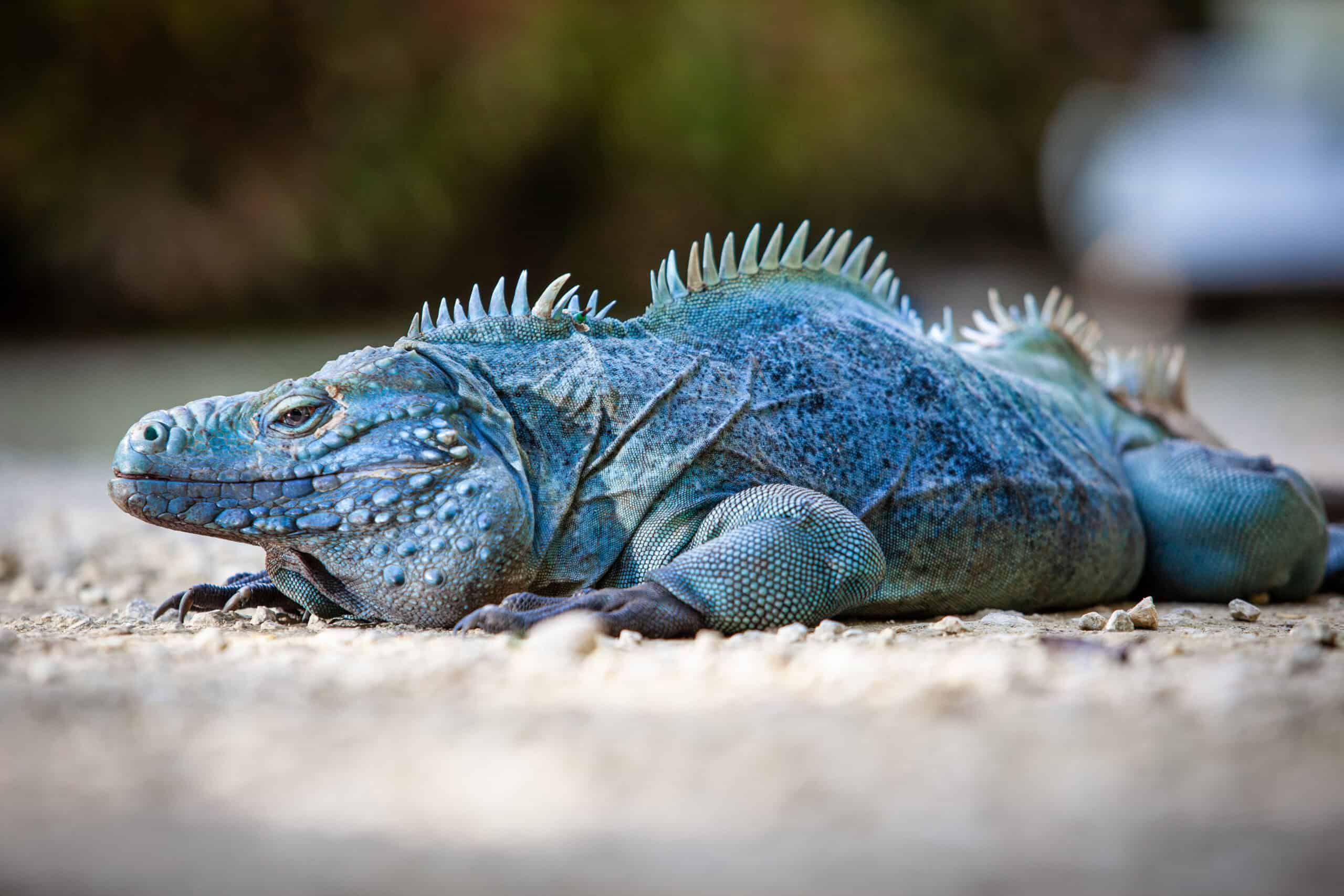
The Grand Cayman Blue Iguana was on the brink of extinction in the early 2000s, with fewer than 25 individuals remaining in the wild. Native to Grand Cayman Island, this iguana faced severe threats from habitat destruction, invasive species, and human activities. Intensive conservation programs, including captive breeding, habitat restoration, and public education, have dramatically increased their population to over 1,000 individuals today. Although still endangered, the recovery of the Grand Cayman Blue Iguana is considered one of the most successful reptile conservation stories. The ongoing efforts include habitat protection, continued breeding programs, and monitoring to ensure the population remains stable and resilient against future threats.
Arakan Forest Turtle (Heosemys depressa)
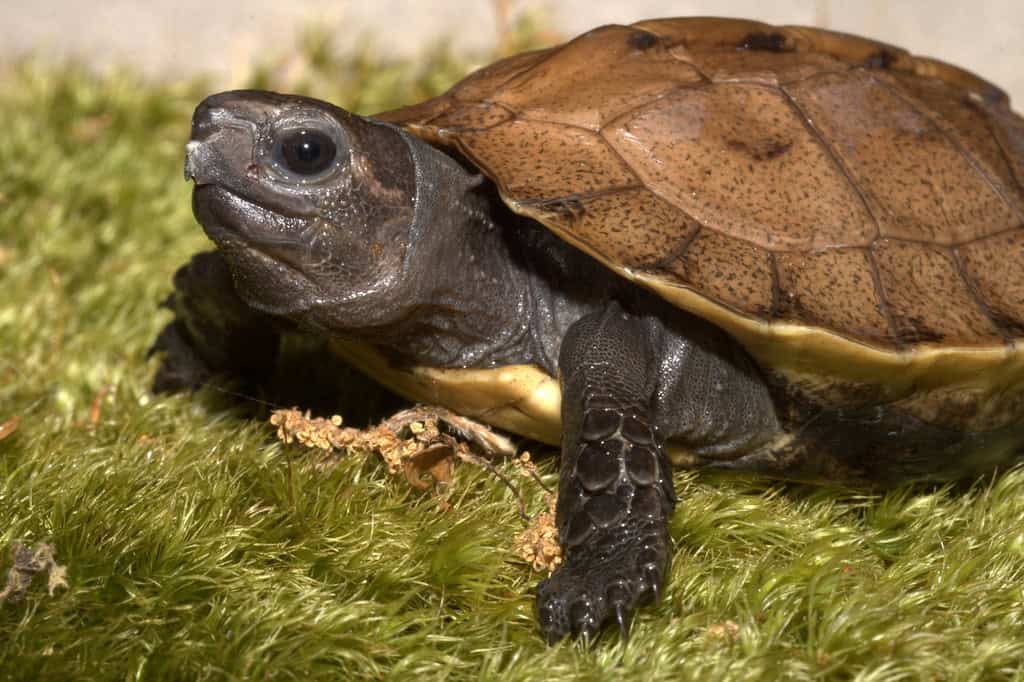
The Arakan Forest Turtle, native to the dense forests of Myanmar, was believed extinct until its rediscovery in the 1990s. This critically endangered species faces significant threats from habitat destruction, poaching, and the illegal pet trade. Conservation initiatives have focused on establishing protected areas, captive breeding programs, and raising awareness about the turtle’s plight. Despite these efforts, the Arakan Forest Turtle’s population remains critically low, highlighting the urgent need for sustained and enhanced conservation actions. Protecting this species also involves addressing broader environmental issues, such as deforestation and illegal wildlife trade, making it a complex and ongoing challenge.
Saint Lucia Racer (Erythrolamprus ornatus)
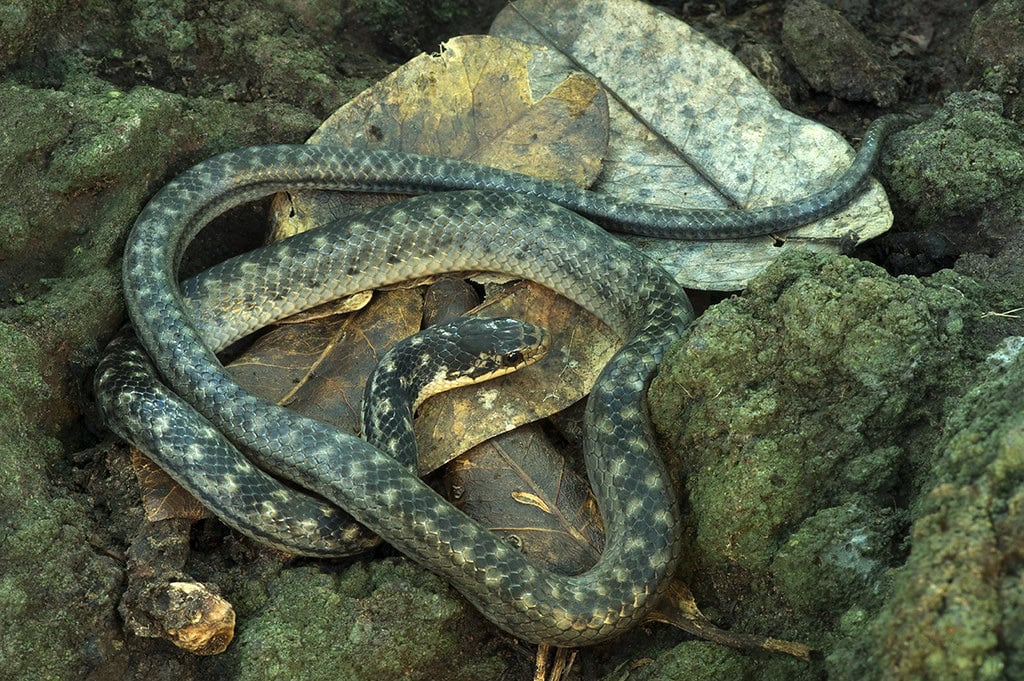
The Saint Lucia Racer is considered the world’s rarest known snake, with only a few individuals left in the wild. Native to the Caribbean island of Saint Lucia, this non-venomous snake faces critical threats from habitat loss and predation by invasive species like the mongoose. Conservation efforts, including habitat restoration and predator control, have been implemented to protect the remaining population. The survival of the Saint Lucia Racer is precarious, and continued conservation work is essential to prevent its extinction. This snake’s plight underscores the importance of preserving island ecosystems and addressing the impact of invasive species on native wildlife.
Geometric Tortoise (Psammobates geometricus)
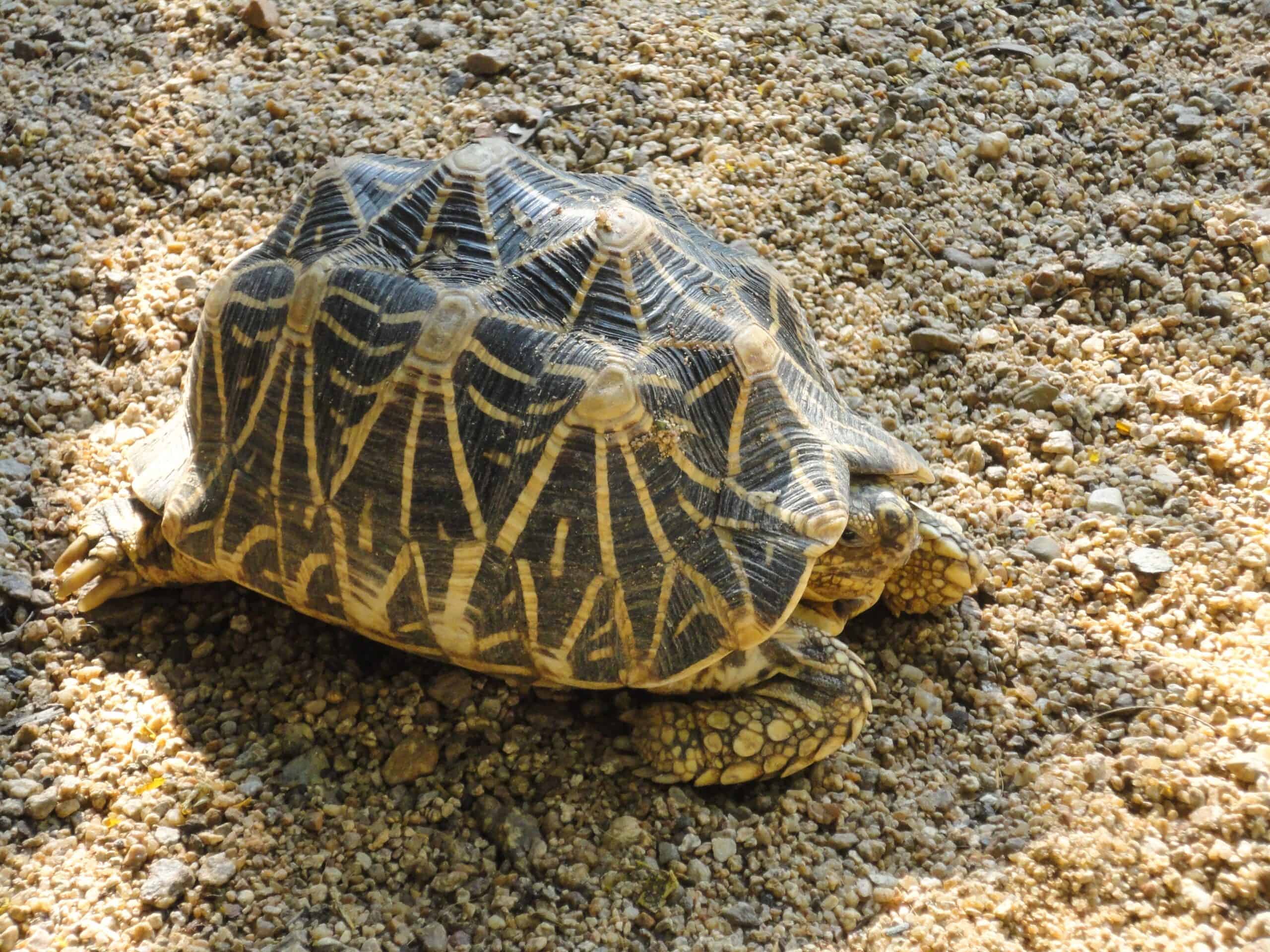
The Geometric Tortoise, known for its beautifully patterned shell, is endemic to South Africa’s Western Cape Province. This critically endangered tortoise has suffered severe habitat loss due to agricultural expansion, urban development, and invasive plant species. Conservation efforts have focused on habitat protection, invasive species control, and public education to promote conservation. These efforts have had some success, but the Geometric Tortoise remains critically endangered. Protecting this species requires ongoing habitat management and restoration, as well as continued engagement with local communities to ensure sustainable land-use practices.
Minute Leaf Chameleon (Brookesia micra)
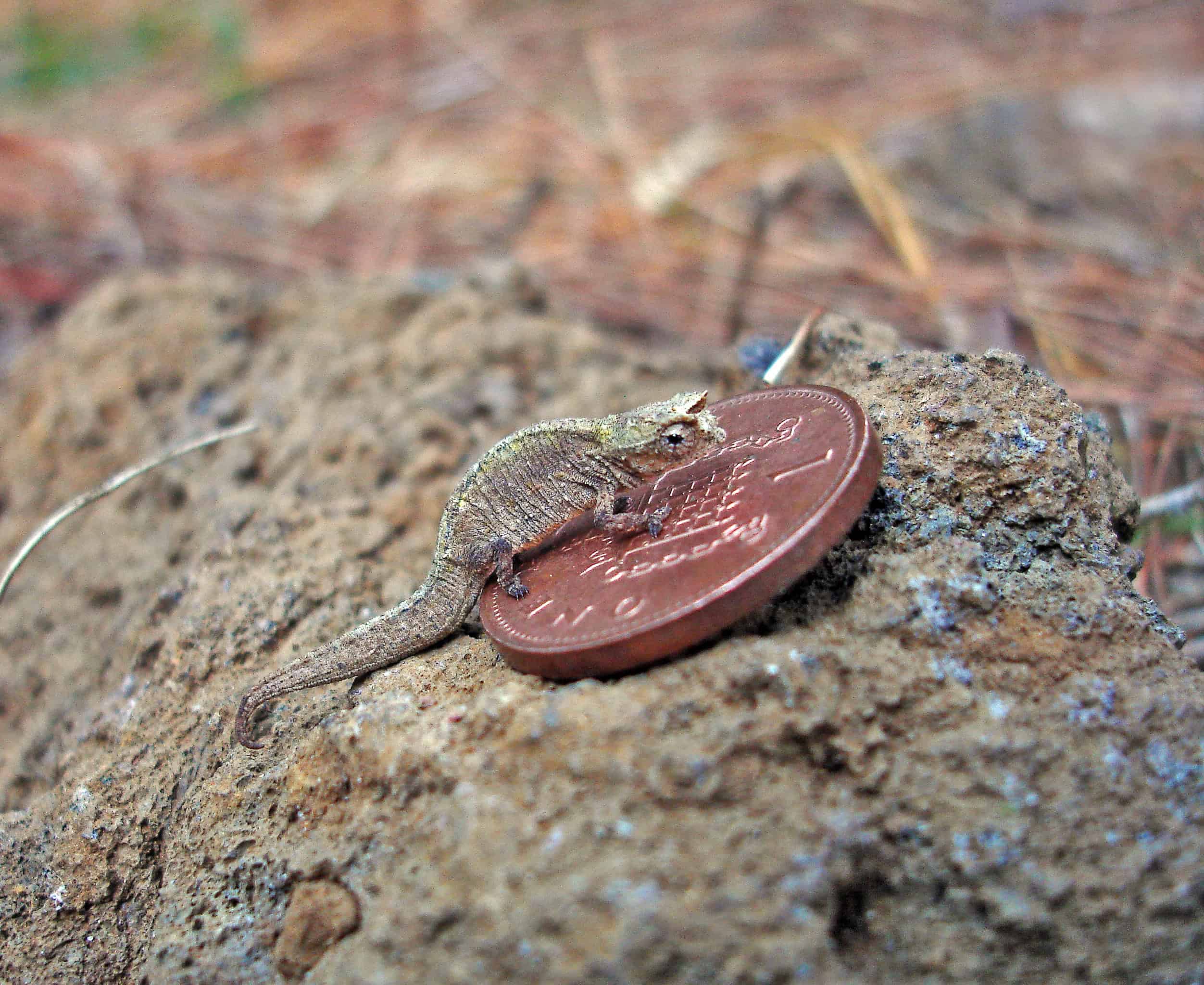
The Minute Leaf Chameleon, the world’s smallest chameleon, is found exclusively in the forests of Madagascar. This tiny chameleon, which can fit on a match head, faces critical threats from habitat destruction and deforestation. Conservation efforts have focused on habitat protection and restoration, as well as raising awareness about the species’ unique status. Despite these efforts, the Minute Leaf Chameleon remains highly vulnerable due to its limited range and ongoing habitat loss. Protecting this species involves safeguarding Madagascar’s unique forest ecosystems and addressing the broader environmental issues that threaten its survival.
Komodo Dragon (Varanus komodoensis)
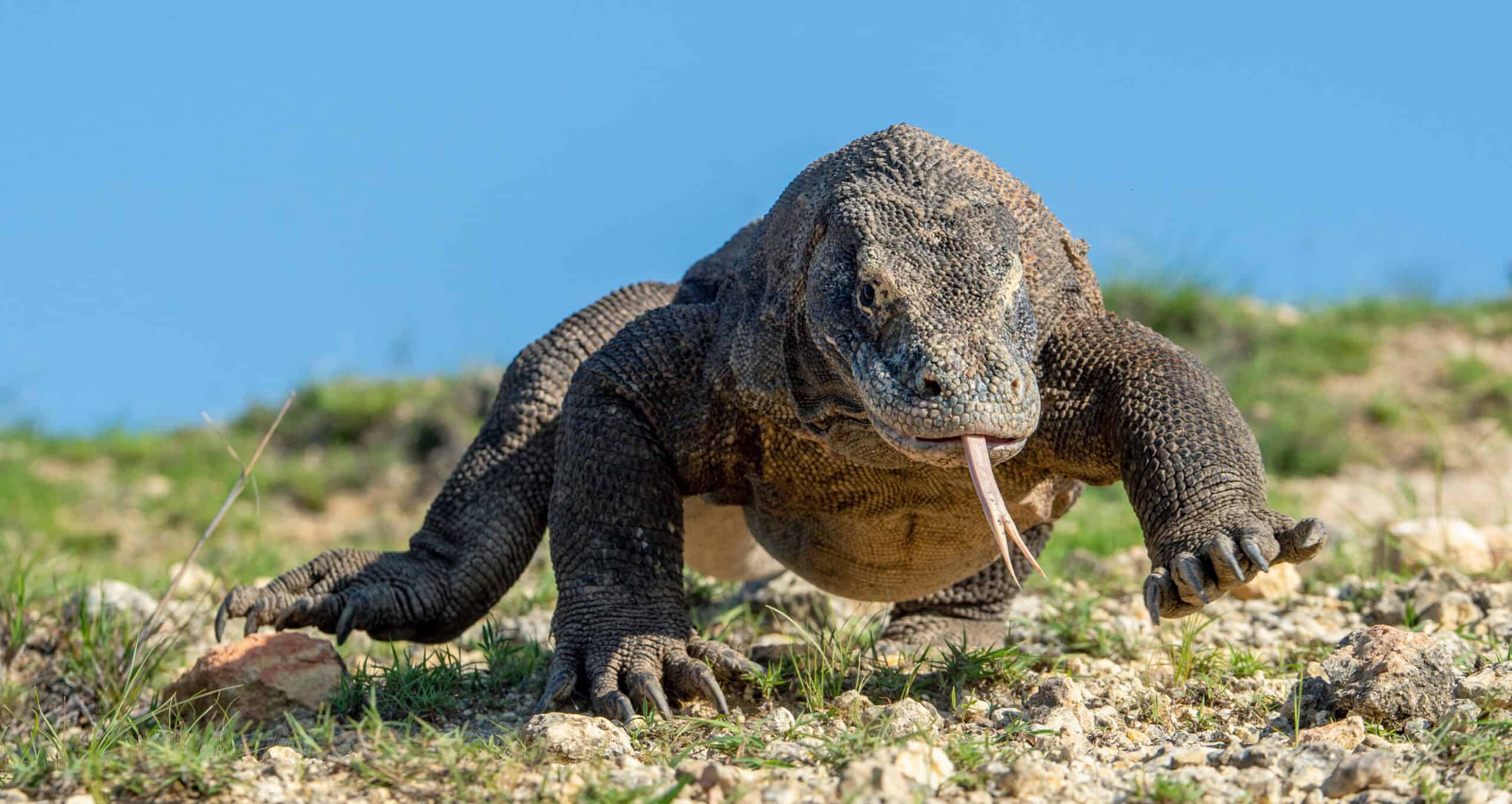
The Komodo Dragon, the world’s largest lizard, is native to the Indonesian islands of Komodo, Rinca, Flores, and Gili Motang. This apex predator faced significant threats from habitat loss, human activities, and natural disasters. Conservation efforts have focused on habitat protection, anti-poaching measures, and promoting sustainable tourism. These initiatives have helped stabilize the population, but the Komodo Dragon remains vulnerable. Continued efforts are necessary to ensure the long-term survival of this iconic species, including habitat management and ongoing monitoring to address emerging threats.
Mary River Turtle (Elusor macrurus)

The Mary River Turtle, known for its ability to breathe underwater for extended periods, is native to the Mary River in Queensland, Australia. This species faced severe population declines due to habitat destruction, pollution, and collection for the pet trade. Conservation efforts have included habitat protection, captive breeding programs, and public education campaigns. These measures have shown positive results, with some population recovery observed. However, the Mary River Turtle remains critically endangered, and continued conservation actions are essential to ensure its survival. Protecting this species also involves broader efforts to safeguard freshwater ecosystems and address the impacts of human activities on river habitats.
Pig-nosed Turtle (Carettochelys insculpta)
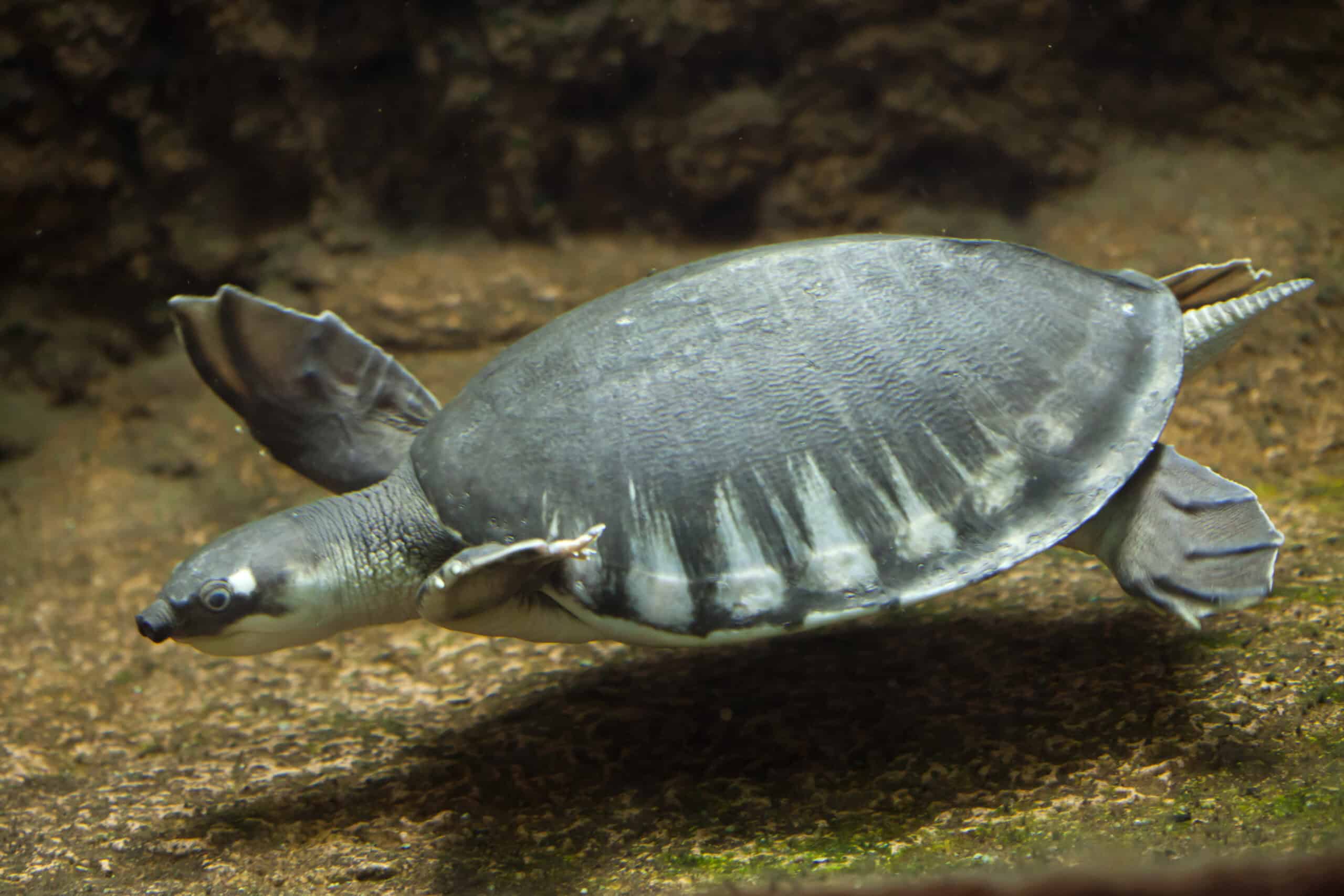
The Pig-nosed Turtle, named for its distinctive snout, is found in the freshwater rivers and estuaries of northern Australia and New Guinea. This unique turtle faced significant threats from habitat destruction, illegal poaching, and the pet trade. Conservation initiatives have focused on protecting nesting sites, enforcing anti-poaching laws, and raising awareness about the species. These efforts have helped stabilize some populations, but the Pig-nosed Turtle remains vulnerable. Ongoing conservation actions are necessary to address habitat loss and ensure the long-term survival of this species. Protecting the Pig-nosed Turtle also involves broader environmental efforts to maintain healthy freshwater ecosystems and combat illegal wildlife trade.
Gharial (Gavialis gangeticus)
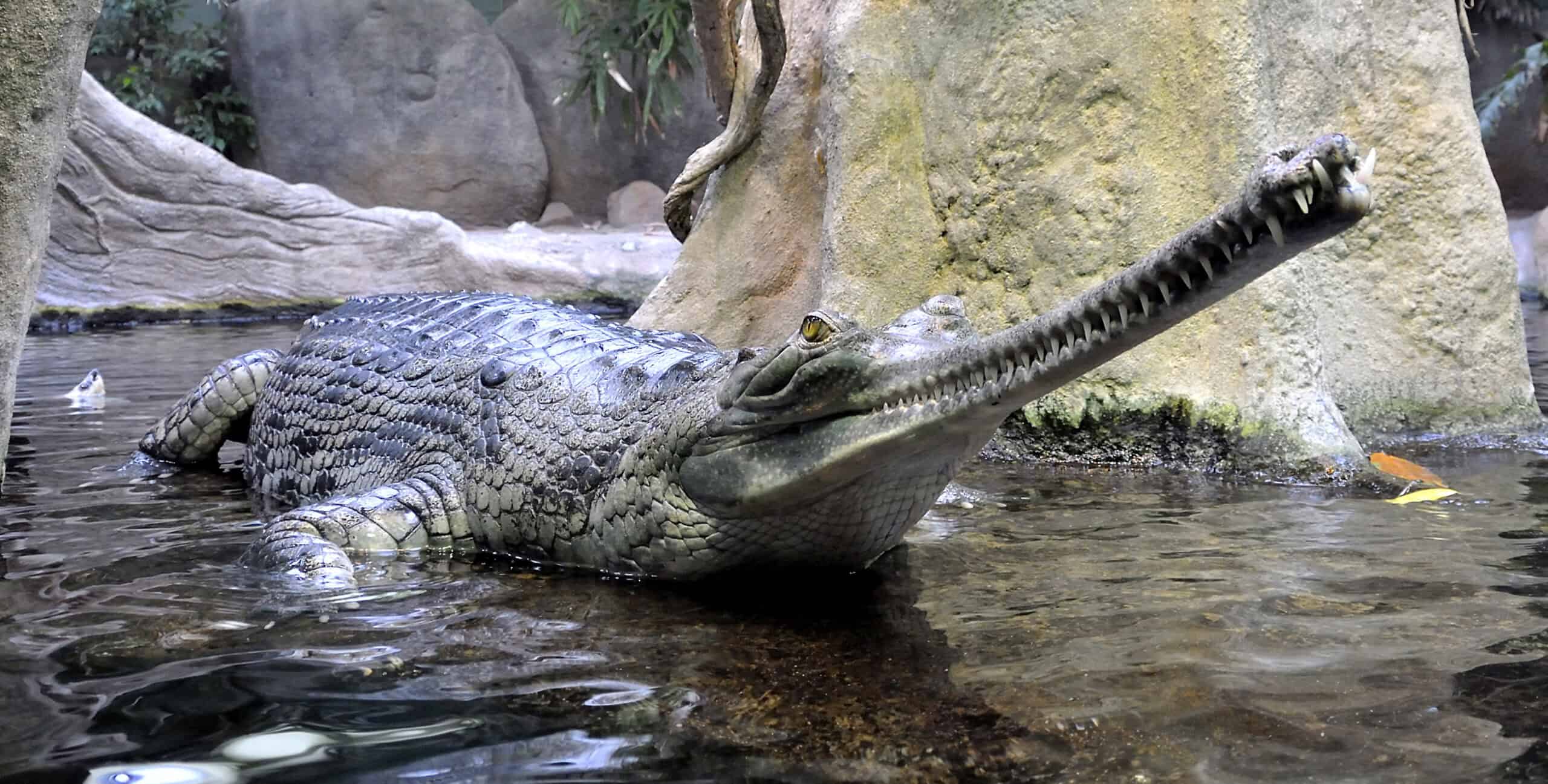
The Gharial, known for its long, narrow snout, is native to the rivers of the Indian subcontinent. This critically endangered crocodile faced drastic population declines due to habitat loss, fishing nets, and pollution. Conservation efforts have included captive breeding, habitat protection, and community engagement to reduce human-wildlife conflict. These initiatives have shown positive results, with some population recovery observed in protected areas. However, the Gharial remains critically endangered, and continued conservation actions are essential to ensure its survival. Protecting this species also involves addressing broader environmental issues such as river pollution and maintaining healthy riverine ecosystems.
Chinese Alligator (Alligator sinensis)

The Chinese Alligator, native to the lower Yangtze River in China, is critically endangered due to habitat destruction, pollution, and human disturbance. Conservation efforts have focused on habitat restoration, captive breeding programs, and public education. These initiatives have led to some population recovery, but the species remains highly vulnerable. Continued conservation actions are necessary to address the ongoing threats and ensure the long-term survival of the Chinese Alligator. Protecting this species also involves broader efforts to safeguard wetland ecosystems and promote sustainable land-use practices in its native range.
Radiated Tortoise (Astrochelys radiata)
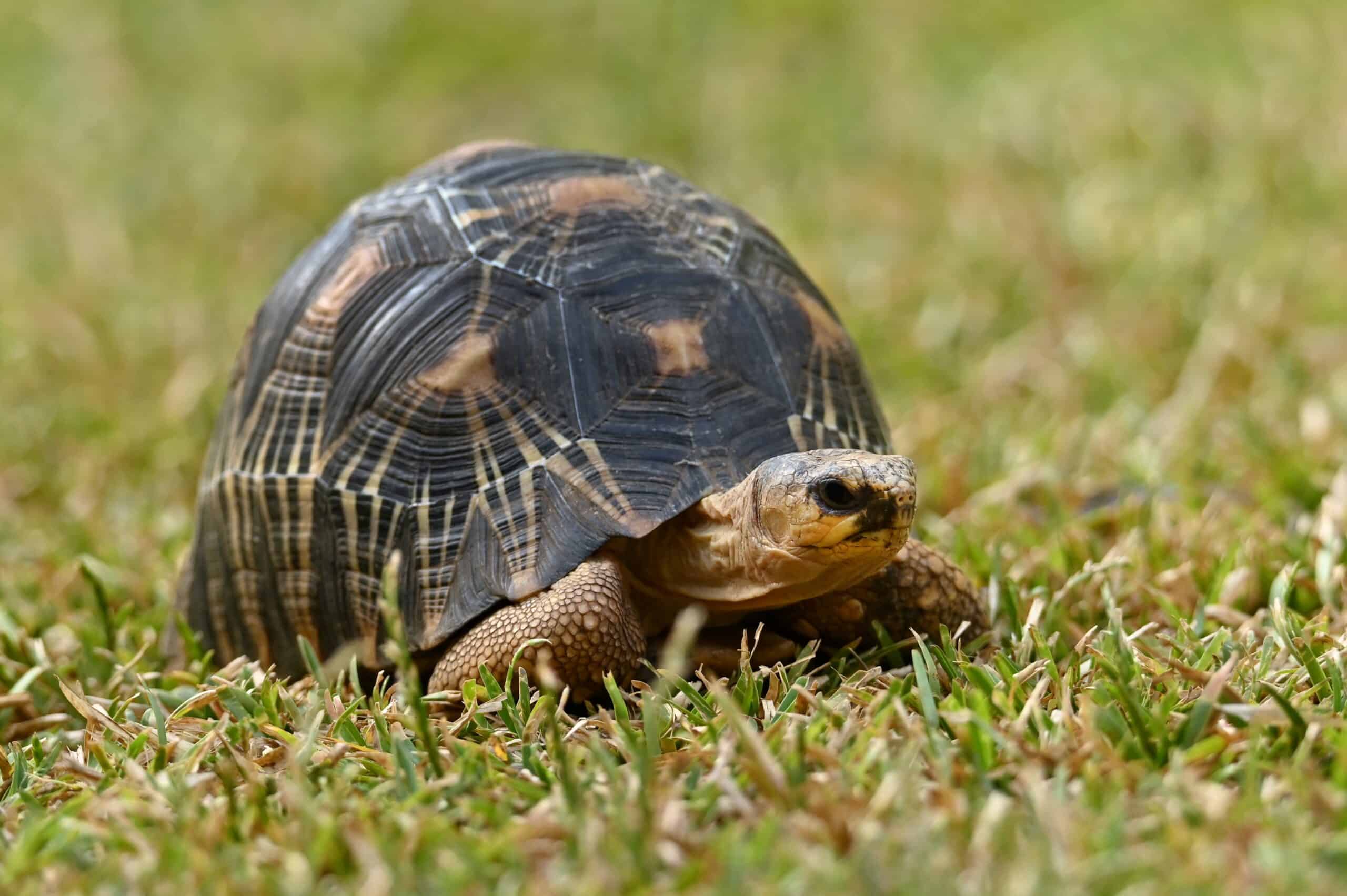
The Radiated Tortoise, native to the spiny forests of southern Madagascar, is critically endangered due to habitat loss, poaching, and the illegal pet trade. Conservation efforts have included habitat protection, anti-poaching measures, and captive breeding programs. These initiatives have shown positive results, with some population recovery observed in protected areas. However, the Radiated Tortoise remains highly vulnerable, and continued conservation actions are essential to ensure its survival. Protecting this species also involves broader efforts to combat illegal wildlife trade and raise awareness about the importance of conserving Madagascar’s unique biodiversity.
Philippine Crocodile (Crocodylus mindorensis)
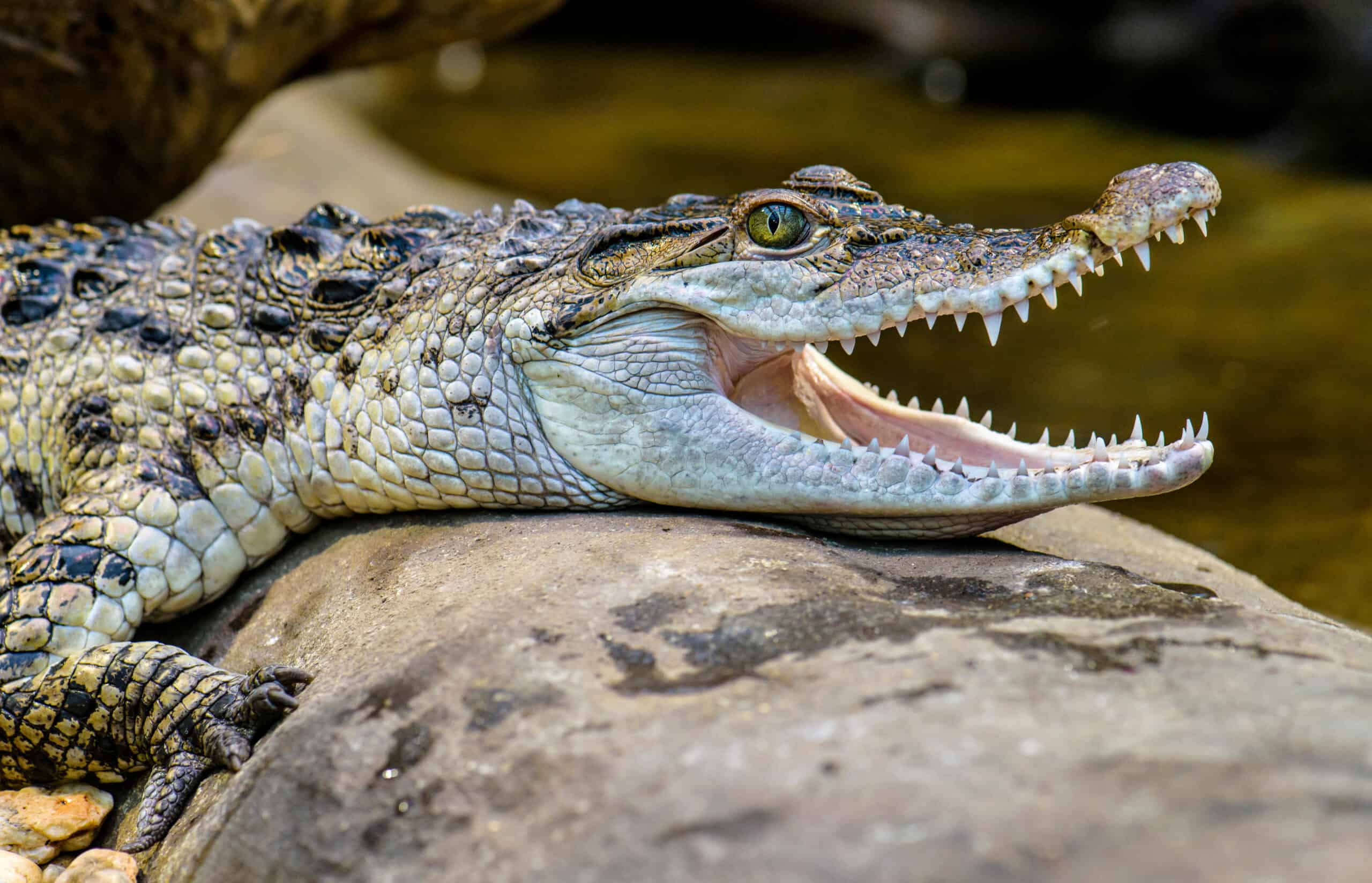
The Philippine Crocodile, one of the world’s most endangered crocodiles, is native to the freshwater rivers and lakes of the Philippines. This species faced significant threats from habitat destruction, hunting, and human-wildlife conflict. Conservation efforts have included habitat protection, captive breeding, and community-based conservation programs. These initiatives have helped stabilize some populations, but the Philippine Crocodile remains critically endangered. Continued conservation actions are necessary to address ongoing threats and ensure the long-term survival of this species. Protecting the Philippine Crocodile also involves broader efforts to safeguard freshwater ecosystems and promote sustainable land-use practices in its native range.
This article originally appeared on Rarest.org.
More from Rarest.org
8 Most Collectible Vintage Christmas Ornaments

Vintage Christmas ornaments hold a special charm, making them highly sought after by collectors. Their history and craftsmanship add to their appeal, transforming them into treasured keepsakes. Read more.
17 Most Expensive Concert Tickets Ever Sold

Concert tickets can sometimes reach astronomical prices. This list showcases the most expensive tickets ever sold. Read more.
13 Rare and Prized Heirloom Vegetables for Your Garden

Heirloom vegetables are a gardener’s delight, prized for their rich flavors, unique appearances, and historical significance. Read more.
